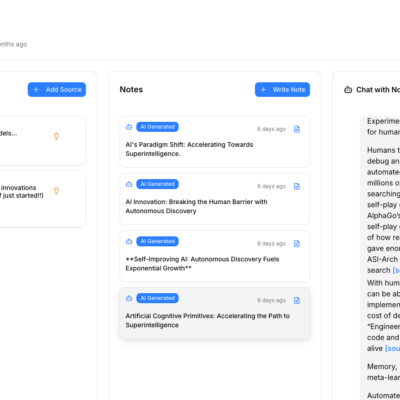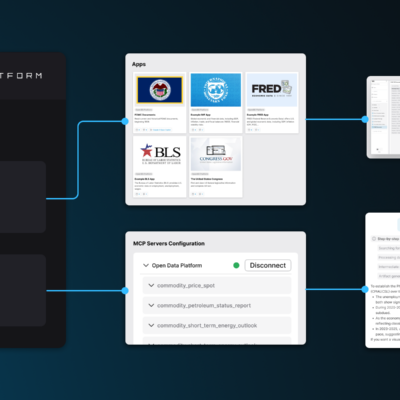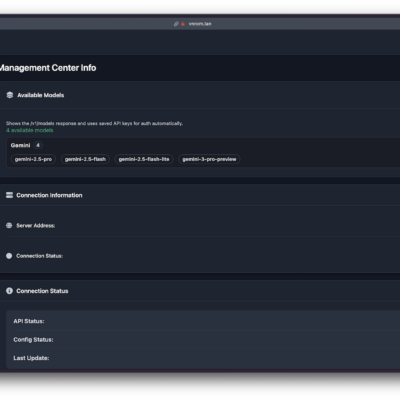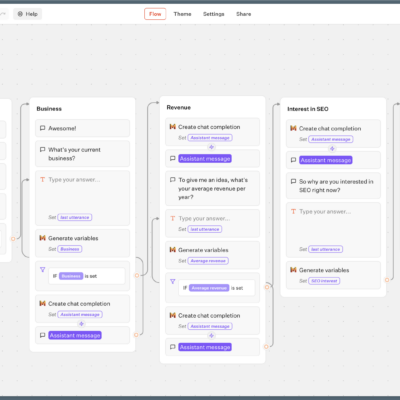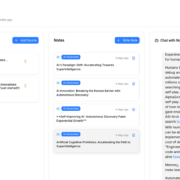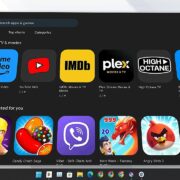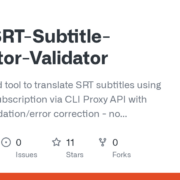In today’s digital landscape, customer relationship management (CRM) systems have become essential for businesses of all sizes. However, the high costs and vendor lock-in associated with proprietary CRMs like Salesforce often leave teams searching for alternatives. Enter Twenty CRM—a powerful, community-driven, open-source CRM platform that’s revolutionizing how businesses manage customer relationships.
Twenty CRM is built for modern teams that value flexibility, cost-effectiveness, and control over their data. With over 36,000 GitHub stars and a thriving community of 500+ contributors, Twenty CRM has emerged as the go-to choice for developers, startups, and tech-savvy entrepreneurs who want a customizable, self-hosted CRM solution without the vendor lock-in nightmare.
Whether you’re looking to replace your existing CRM, explore open-source alternatives, or deploy a personalized CRM for your team, this comprehensive guide will walk you through everything—from installation to real-world usage. By the end of this post, you’ll have a fully functional Twenty CRM instance running on your local machine or server, ready to transform how your team manages customer relationships.

What is Twenty CRM? Understanding the Open-Source Alternative
Why Choose Twenty CRM?
Twenty CRM is the leading open-source customer relationship management platform, crafted by hundreds of community contributors to solve a critical problem: traditional CRMs are either too expensive or too rigid. Developed by the team at Twentyhq, this modern CRM platform provides businesses with a vendor-neutral, customizable, and cost-effective solution for managing customer interactions.
The philosophy behind Twenty CRM is simple yet powerful: you shouldn’t be trapped by your CRM. Unlike proprietary solutions that lock companies into long-term contracts and inflate pricing, Twenty CRM offers complete transparency, full control of your data, and the flexibility to customize every aspect to match your unique business needs.
Core Benefits of Twenty CRM
1. Fully Open-Source and Community-Driven
Twenty CRM is built on transparency and community collaboration. With over 500 active contributors on GitHub, the platform continuously evolves based on real-world needs. You have access to the source code, can audit for security, and can even contribute improvements back to the community.
2. Cost-Effective Solution
Eliminate expensive licensing fees and monthly subscriptions. Self-host Twenty CRM on your own infrastructure, or use the managed cloud option. There’s no vendor lock-in—you own your data and your solution.
3. Highly Customizable Platform
Create custom objects and fields tailored to your business workflow. Design your own data structure, build custom workflows, and extend functionality through APIs and webhooks. Your CRM should adapt to your process, not the other way around.
4. Modern, Intuitive User Interface
Inspired by tools like Notion and Airtable, Twenty CRM features a sleek, user-friendly interface that requires minimal training. Your team will be productive from day one.
5. Real-Time Collaboration
Built for remote and distributed teams, Twenty CRM enables real-time collaboration, ensuring your entire team stays synchronized regardless of location.
Key Features of Twenty CRM
Twenty CRM comes packed with powerful features designed for modern sales and customer management:
- Contact Management: Efficiently store and organize customer data with custom fields tailored to your needs
- Deal Tracking: Manage sales opportunities through customizable pipeline stages with Kanban views
- Custom Objects: Create and manage any business object beyond standard contacts and deals
- Workflow Automation: Automate repetitive tasks with powerful triggers and actions, streamlining your processes
- Email Integration: Synchronize emails and calendar events directly within the CRM
- Task and Note Management: Schedule tasks and create detailed notes for comprehensive customer interaction tracking
- Flexible Views: Switch between table, Kanban, and other views to visualize data the way you prefer
- User Permissions: Control access with custom roles and object-level permissions
- API & Webhooks: Connect to external tools and build custom integrations seamlessly
- Multi-Language Support: Collaborate globally with support for multiple languages through community translations
System Requirements: What You Need Before Installing Twenty CRM
Before diving into the installation process, ensure your system meets these minimum requirements:
Hardware Requirements
| Component | Minimum | Recommended |
|---|---|---|
| CPU | 2 cores | 4 cores |
| RAM | 4 GB | 8 GB |
| Storage | 10 GB | 50 GB SSD |
| Network | Stable internet connection | Gigabit internet |
Software Requirements
For Docker Installation (Recommended):
- Docker: Version 20.10 or later
- Docker Compose: Version 1.29 or later
- Operating System: Linux (Ubuntu 20.04+), macOS, or Windows with WSL2
- PostgreSQL: Version 12+ (included in Docker Compose)
- Redis: For caching (included in Docker Compose)
For Local Development Setup:
- Node.js: Version 18.x or later
- npm: Version 9.x or later
- Git: For cloning the repository
- PostgreSQL: Version 12 or later (local installation)
- Redis: For session management and caching
Choosing Your Installation Method
Twenty CRM offers multiple deployment options:
- Docker Compose (Recommended): Fastest and easiest setup; includes all dependencies
- Local Development Setup: Best for developers wanting to contribute or customize
- Cloud Hosting: Deploy on Heroku, DigitalOcean, AWS, or other platforms
For this guide, we’ll focus on Docker Compose installation (easiest) and local development setup (for developers).
Step-by-Step Installation Guide: Getting Twenty CRM Running
Option 1: Docker Compose Installation (Recommended for Most Users)
The Docker Compose method is the fastest way to get Twenty CRM running. All services are containerized, eliminating compatibility issues.
Step 1: Install Docker and Docker Compose
First, ensure Docker and Docker Compose are installed on your system.
On Ubuntu/Debian:
sudo apt update
sudo apt install docker.io docker-compose
sudo usermod -aG docker $USERAfter installation, verify Docker is working:
docker --version
docker-compose --versionOn macOS:
Download and install Docker Desktop from the official Docker website. It includes both Docker and Docker Compose.
On Windows:
Install Docker Desktop with Windows Subsystem for Linux 2 (WSL2) support for optimal performance.
Step 2: Download the Docker Compose Configuration
Create a working directory for Twenty CRM and download the necessary files:
mkdir -p ~/twenty-crm
cd ~/twenty-crmDownload the Docker Compose file and environment configuration:
curl -O https://raw.githubusercontent.com/twentyhq/twenty/main/packages/twenty-docker/docker-compose.yml
curl -o .env https://raw.githubusercontent.com/twentyhq/twenty/main/packages/twenty-docker/.env.exampleStep 3: Configure Environment Variables
Open the .env file and review the configuration:
nano .envKey environment variables to verify:
# Database Configuration
DATABASE_URL=postgres://postgres:postgres@postgres:5432/twenty
# Redis Configuration
REDIS_URL=redis://redis:6379
# Server Port
PORT=3000
# Node Environment
NODE_ENV=developmentFor production deployments, update these values according to your security requirements.
Step 4: Start the Containers
Allocate sufficient memory to Docker (at least 8GB recommended). Then start the services:
docker-compose up -dThis command downloads and starts the following containers:
- PostgreSQL: Database server for storing CRM data
- Redis: Caching and session management
- Twenty CRM Backend: NestJS API server
- Twenty CRM Frontend: React-based web interface
Verify containers are running:
docker-compose psYou should see all services with status “Up”.
Step 5: Access Twenty CRM
Once containers are running, access Twenty CRM in your web browser:
http://localhost:3000First-Time Setup:
On first access, you’ll be guided through the initial setup wizard:
- Create an admin account with email and password
- Set your workspace name
- Customize your CRM configuration
- Add your first team members (optional)
Congratulations! Your Twenty CRM instance is now running.
Option 2: Local Development Setup (For Developers)
If you want to contribute to Twenty CRM or customize it extensively, set up a local development environment.
Step 1: Clone the Repository
git clone https://github.com/twentyhq/twenty.git
cd twentyStep 2: Install Dependencies
Twenty CRM uses Nx as a monorepo manager. Install all dependencies:
npm install
# or
yarn installStep 3: Set Up the Database
Create a PostgreSQL database for development:
createdb twenty_developmentStep 4: Configure Environment Variables
Copy the example environment file and update it:
cp packages/twenty-server/.env.example packages/twenty-server/.envUpdate database connection details:
DATABASE_URL=postgres://your_user:your_password@localhost:5432/twenty_developmentStep 5: Run Database Migrations
npm run database:migrateStep 6: Start the Development Server
In separate terminal windows, run:
Terminal 1: Start the backend
npm run start:serverTerminal 2: Start the frontend
npm run start:webThe application will be available at http://localhost:3000.
Troubleshooting Common Installation Issues
Problem: Port 3000 is already in use
Solution: Change the port in your .env file or stop the conflicting service:
docker-compose down
# Edit PORT in .env, then:
docker-compose up -dProblem: Docker containers exit immediately
Solution: Check logs for errors:
docker-compose logs -fProblem: Database connection errors
Solution: Verify PostgreSQL is running and accessible:
docker-compose ps
docker-compose logs postgresProblem: Insufficient memory for containers
Solution: Allocate more memory to Docker or reduce container resource allocation.
Using Twenty CRM: A Practical Walkthrough
Getting Started: The Dashboard
After logging in, you’ll see the Twenty CRM dashboard—your command center for managing customer relationships. The dashboard displays quick-access widgets and recent activity.
Core Functionalities Explained
1. Contact Management: Building Your Customer Database
Adding Contacts:
- Navigate to the Contacts section
- Click Add Contact or Import Contacts
- Fill in essential information:
- First Name & Last Name
- Email Address
- Phone Number
- Company (links to company object)
- Custom Fields (industry, lead score, preferred contact method, etc.)
- Click Save
Organizing Contacts:
- Use Filters: Filter by company, creation date, or custom fields to find specific contacts quickly
- Sort Data: Organize by name, date added, or custom fields
- Group By: Group contacts by company, status, or industry for better insights
- Add Notes: Click any contact to view their profile and add interaction notes
2. Deal Tracking: Managing Your Sales Pipeline
Creating a Deal:
- Go to Deals section
- Click New Deal
- Configure your deal:
- Deal Name: Clear, descriptive title
- Associated Contact: Link to the relevant contact
- Pipeline Stage: Select from Prospecting, Qualified, Proposal, Negotiation, Closed Won, or Closed Lost
- Amount: Deal value
- Expected Close Date: Target completion date
- Save the deal
Visualizing Your Sales Pipeline:
Use the Kanban View to see deals organized by stage. Drag deals between columns to update their status. The Table View provides a detailed spreadsheet-like interface with sorting and filtering options.
3. Workflow Automation: Reducing Manual Work
Creating Automated Workflows:
- Navigate to Workflows
- Click New Workflow
- Define your automation:
- Trigger: Choose what initiates the workflow (e.g., “when a new deal is created”)
- Conditions: Set criteria (e.g., “deal amount > $10,000”)
- Actions: Specify what happens (e.g., “send email notification,” “create task,” “update field”)
- Activate the workflow
Example Automation Scenarios:
- Send a welcome email when a new contact is added
- Create a follow-up task when a deal reaches a specific stage
- Notify team members when a high-value deal is created
- Automatically update company information from external data sources
4. Email Integration: Keep Conversations in One Place
Synchronizing Your Email:
- Click your profile icon
- Navigate to Email Connections
- Select your email provider (Gmail, Outlook, etc.)
- Authenticate and grant permissions
Once connected, emails with your contacts automatically appear in their profiles, providing complete interaction history.
5. Tasks and Notes: Staying Organized
Creating Tasks:
- Within any contact or deal, click Add Task
- Set:
- Task title and description
- Assignment (assign to yourself or team member)
- Due date and reminder
Adding Notes:
- Click Add Note within a contact or deal profile
- Write detailed notes about interactions, agreements, or follow-ups
- Notes create an audit trail of all customer interactions
Best Practices for Maximizing Twenty CRM
1. Establish a Data Entry Standard
Create a data entry checklist for your team to ensure consistency:
- Require complete contact information before adding to CRM
- Use standardized naming conventions (e.g., “John Smith” not “john s.”)
- Populate custom fields consistently
- Document your data structure
2. Regularly Clean Your Data
- Schedule monthly data cleanup reviews
- Remove duplicate entries
- Update outdated information
- Archive inactive contacts/deals
3. Customize Objects and Fields to Your Workflow
Don’t force your process into a generic CRM structure. Instead:
- Create custom objects for entities specific to your business
- Add custom fields that capture important metrics
- Design views and filters for your team’s workflow
- Document your data model for new team members
4. Leverage Workflows for Efficiency
- Automate repetitive tasks like email follow-ups
- Create workflows for your standard sales process
- Use triggers and actions to connect with external tools
- Regularly review and refine automation rules
5. Ensure Team Adoption
- Provide adequate training on CRM workflows
- Start with core features, gradually introduce advanced functionality
- Gather feedback and iterate
- Lead by example—use the CRM yourself
6. Integrate with Your Existing Tools
Twenty CRM’s API and Webhooks enable integration with:
- Communication Tools: Slack, Microsoft Teams
- Email & Calendar: Gmail, Outlook
- Automation Platforms: Zapier, n8n
- Accounting Software: Custom integrations via API
- Marketing Platforms: Email marketing services
Advanced Features: Unlocking Twenty CRM’s Full Potential
Custom Objects: Beyond Contacts and Deals
Twenty CRM’s power lies in its extensibility. Create custom objects for your unique business needs:
- For Agencies: Project objects, client campaigns, deliverables
- For Consulting Firms: Engagement objects, proposal tracking, resource allocation
- For E-Commerce: Vendor management, product catalog, order tracking
Creating a Custom Object:
- Go to Settings → Objects
- Click Create Object
- Define object properties (name, icon, singular/plural forms)
- Add custom fields specific to your object
- Configure permissions and visibility
Permissions and Role-Based Access
Control who sees what with granular permission settings:
- Workspace-Level Permissions: Determine who can access the entire workspace
- Object-Level Permissions: Control access to specific object types
- Custom Roles: Create roles with specific permission combinations
This ensures data security while enabling collaboration.
API and Webhooks for Seamless Integration
For advanced users, Twenty CRM provides a GraphQL API for custom integrations:
# Example: Retrieve all contacts via API
curl -X POST https://your-twenty-instance/graphql \
-H "Authorization: Bearer YOUR_API_TOKEN" \
-H "Content-Type: application/json" \
-d '{
"query": "{ people { edges { node { id firstName lastName email } } } }"
}'Use webhooks to trigger external actions when CRM events occur, enabling sophisticated automation workflows.
Integrating Twenty CRM with Your Existing Ecosystem
Popular Integration Scenarios
Scenario 1: Email Automation with Zapier
Connect Twenty CRM to Zapier to:
- Create a new contact in Twenty CRM when a new subscriber signs up
- Send Slack notifications when a high-value deal is created
- Update spreadsheets with CRM data automatically
Scenario 2: Team Communication with Slack
- Receive deal notifications in Slack
- Log Slack messages as notes in customer profiles
- Create contacts from Slack user mentions
Scenario 3: Marketing Automation
Connect with Mailchimp, HubSpot, or similar platforms to:
- Sync contacts between platforms
- Track email campaign opens and clicks in CRM
- Segment audiences based on CRM data
Conclusion: Transform Your Customer Relationships
Twenty CRM represents a paradigm shift in how businesses approach customer relationship management. By combining the power of open-source flexibility with modern UX design, Twenty CRM delivers a compelling alternative to expensive, rigid proprietary solutions.
Whether you’re a developer exploring open-source alternatives, a startup bootstrapping your infrastructure, or an enterprise seeking vendor independence, Twenty CRM provides the tools, flexibility, and community support you need.
Your Next Steps
- Install Twenty CRM using the Docker Compose method outlined in this guide
- Explore the features by creating sample contacts and deals
- Customize the platform to match your business workflow
- Integrate with tools your team already uses
- Join the community and contribute back improvements
Additional Resources
- Official Documentation: docs.twenty.com
- GitHub Repository: github.com/twentyhq/twenty
- Discord Community: Join thousands of users and contributors
- YouTube Tutorials: Step-by-step video guides for common tasks
- Self-Hosting Guide: Complete deployment documentation for various platforms
Pro Tips for Maximum Success
Tip 1: Implement Gradually
Don’t try to replicate your entire sales process on day one. Start with core features (contacts, deals, basic workflows), then gradually expand as your team becomes comfortable.
Tip 2: Document Your Setup
Create internal documentation about:
- Custom objects and field definitions
- Standard workflow processes
- Data entry guidelines
- Integration setup procedures
This documentation accelerates onboarding for new team members.
Tip 3: Monitor Performance
Regularly review:
- Data quality metrics
- Workflow effectiveness
- Team adoption rates
- System performance and resource usage
Tip 4: Stay Updated
Follow Twenty CRM releases and updates:
- Star the repository on GitHub for notifications
- Join the Discord community for discussions
- Subscribe to the newsletter for feature announcements

